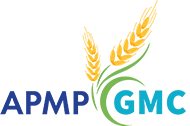By: David Seibert
If you use color graphs and charts to communicate information in your proposals, then the 8% of men and .5% of women who are colorblind may not understand your message.
Background
The term “colorblind” is a misnomer; it should be called color deficient, not color blind. People who are colorblind can see color; we just can’t see as many shades as someone with normal color vision.
I am red/green colorblind, the most common type. I can see Santa Claus red, kelly green, sky blue, and sunflower yellow. The problem I have is when you start blending colors. For example, I can see blue and bright red, but if you mix them together, I don’t see purple. All I see is a slightly darker blue. My eyes see blue just fine, but they aren’t as sensitive to the red, so the red gets lost against the blue. I have trouble with green, too. To me, traffic lights are red, yellow, and white.
The severity of someone’s colorblindness varies by person, but in general, people who are color blind often differentiate colors not by their shade but by how bright or dark the colors appear. Browns, darker reds, darker greens—I tend to lump all of these into a great big group I call “Earth tones.” My friends and family laugh, but it’s a lot easier to broadly label colors as Earth tone than to try (and fail) at guessing the name of a dark color.
How does all of this relate to proposal writers?
If you are using colors artistically, to make your proposals look nice, this discussion doesn’t really apply. Even colorblind people appreciate your use of color.
Where color matters is when you use it to communicate information—as is common in many charts and graphs. For example, if you construct a pie chart that lists company divisions, and division one is the blue slice, division two is the purple slice, division three is the dark green slice, and division four is the brown slice, many of your colorblind readers may not easily understand the information you’re trying to communicate. That’s because the blue and purple may look too similar, and the dark green and brown might be, for many, indistinguishable. If you add in magenta or burgundy, forget about it—they’re all just varying shades of dark. Based on experience, in fact, I’d probably have to ask someone for help to understand which color is associated with each division.
This is why, when I’m asked about using colors in proposals, I generally suggest labeling each pie slice on the chart or sticking to bold and distinct colors like dark blue, light blue, bright red, bright yellow, and kelly green. If you need even more colors in your pallet, consider adding patterns to the brighter colors (yellow, light blue, and Kelly green). These simple steps will make your charts and graphs more universally understandable.
*Previously posted on proposalbestpractices.com
David Seibert is a professional salesperson, proposal trainer, author, writer, and business development consultant. He is the founder and president of The Seibert Group, a proposal consulting and training organization serving businesses that sell to other businesses, schools, and to state and local governments. You can contact him at [email protected].
